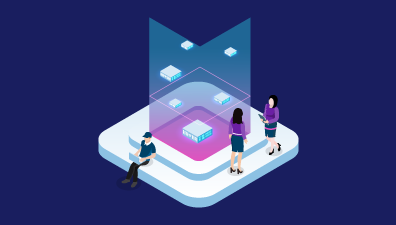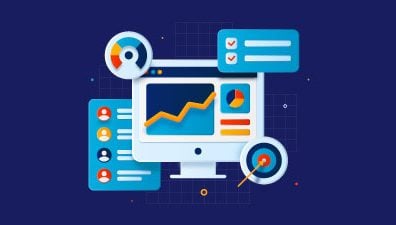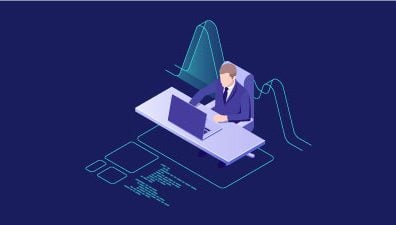In the dynamic world of eCommerce, a well-defined marketing strategy is absolutely important for businesses to reach the right customer one step faster than their competitors. An eCommerce marketing funnel can be your best ally in optimizing this process to produce an effective marketing strategy. It serves as a strategic road map, guiding potential customers from their initial interaction with your brand through the purchase decision and beyond.
In this article, we will examine the definition of an eCommerce marketing funnel and delve into the three essential steps required to construct one effectively, thereby ensuring that your online business thrives in the competitive digital landscape. Let’s begin!
Table of Contents
- What is an eCommerce marketing funnel?
- Why do we need an eCommerce marketing funnel?
- How the eCommerce marketing funnel enhances your website
- 5 Stages of an eCommerce marketing funnel
- Key KPIs for conversion funnel optimization
- 3 Easy Steps to Build an Optimized eCommerce Marketing Funnel
- eCommerce marketing funnel examples
What is an eCommerce marketing funnel?
Contrary to its name, the eCommerce marketing funnel is not a place where all your marketing activities or anything meaningful with a website (traffic, for example) will go through without loss, like the purpose of a typical funnel.
It is a description of the visitor’s path from the moment they click on your website until they make a payment for the order. During the process, the customers will make a series of decisions, and these will be recorded in the eCommerce marketing funnel. So, the website owner can see what his customers are searching for, what their experiences are like, and whether the type of information he provides on the eCommerce store is sufficient.
An eCommerce marketing funnel will usually have 4 stages, including Awareness, Interest, Desire, and Action. That is the process by which customers interact with your website and products.
So why is it funnel-shaped?
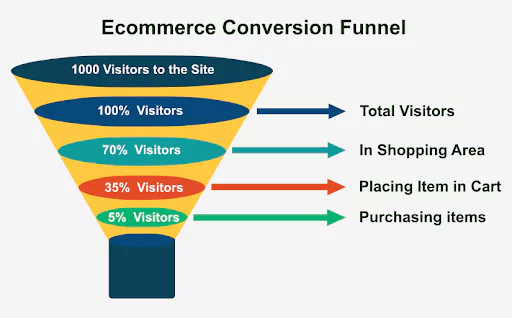
As you can see in the image, the widest part at the top is the stage where customers know the brand. If they’re not interested, they’ll leave. But what if it is? That is, they are going to the second stage. Gradually, your customers will reach the final step of the funnel.
However, it is a gloomy fact that the average number of customers who make it to the final stage is very low, only 3.3% of overall. And it’s called conversion rate.
After each stage of the eCommerce marketing funnel, this number will decrease, as shown below. That’s why it has that special shape.
But don’t be discouraged, because…
From that customer journey map, you can determine the types of content you need to edit to engage with customers, plan marketing campaigns, and more. The end result is an increase in the area of the lower stages of the funnel.
For details on the benefits of an eCommerce marketing funnel for a website, scroll down to the next section.
Why do we need an eCommerce marketing funnel?
The eCommerce marketing funnel is an effective method when you, as an eCommerce marketer, feel stuck trying to optimize your marketing efforts. More specifically, if you want to improve the conversion rate of your website, your eCommerce marketing funnel will help you turn leads into buyers.
What is the purpose of creating an eCommerce store?
Of course, it’s part of the sale process, right?
Everyone wants potential customers to visit their online store, fill their cart with items, and pay for them. However, life doesn’t go, sometimes, the way we want it to.
Often, customers will not immediately purchase the products of an eCommerce store the first time they visit it. Consumers today have a very clear awareness of the so-called transparency of products. They will check all kinds of information related to it and the brand, compare it with similar products from other vendors, etc., and then make the final decision.
If you’re having problems converting them into customers, you’re not alone. However, with our experience in eCommerce marketing, we will share with you a secret to help you drive sales by sending the right message to the proper potential audience at the correct time. That is bringing it into your eCommerce marketing funnel.
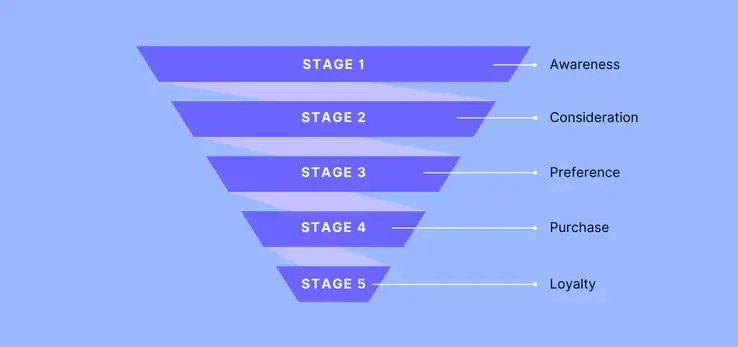
So what is it? Which stages are included? What role does it play in attracting customers from the first visit? How to build and optimize it?
The essence of this tool lies in knowing what your potential customers want. Let’s explore those specific sections in today’s article and dive right in!
How the eCommerce marketing funnel enhances your website
Marketing opportunities
Certainly, not everyone has the same needs. Thus, you need to identify the right customer segments, i.e., the ones that will bring you the most value, improve the areas that affect conversions, and optimize certain stages in the eCommerce marketing funnel.
For example, your customer group is young people. So your research will direct you towards boosting your posts about discounts and promotions on social media like Facebook. Then, take advantage of it to link back to your website to drive traffic.
Content strategy
Using an eCommerce marketing funnel and doing customer research, you’ll know what kind of content they’re interested in. From there, you can deliver proper content and have greater control over your content marketing strategies.
Remember to personalize the content sent to customers, especially in email marketing, which means making your potential customers feel that your brand cares about THEM. This is essential to entice and win customers in a highly competitive eCommerce environment.
Better user experience and SEO
With each stage of the specific eCommerce marketing funnel optimized, you’ll improve the user experience. If you don’t know, the length of time a customer stays on your website plus the click-through rate, which is boosted by an excellent customer experience, will make your SEO score soar. As a consequence, your website will be appreciated by search engines like Google in terms of content (useful for users or not) and put up at high rankings for customers to find easily.
Revenue growth
The increase in conversion rate every day means that the number of your customers closing orders is increasing. It resulted in significant revenue growth. More importantly, when customers are satisfied with their experience in your eCommerce store, they will visit to buy again when the need arises.
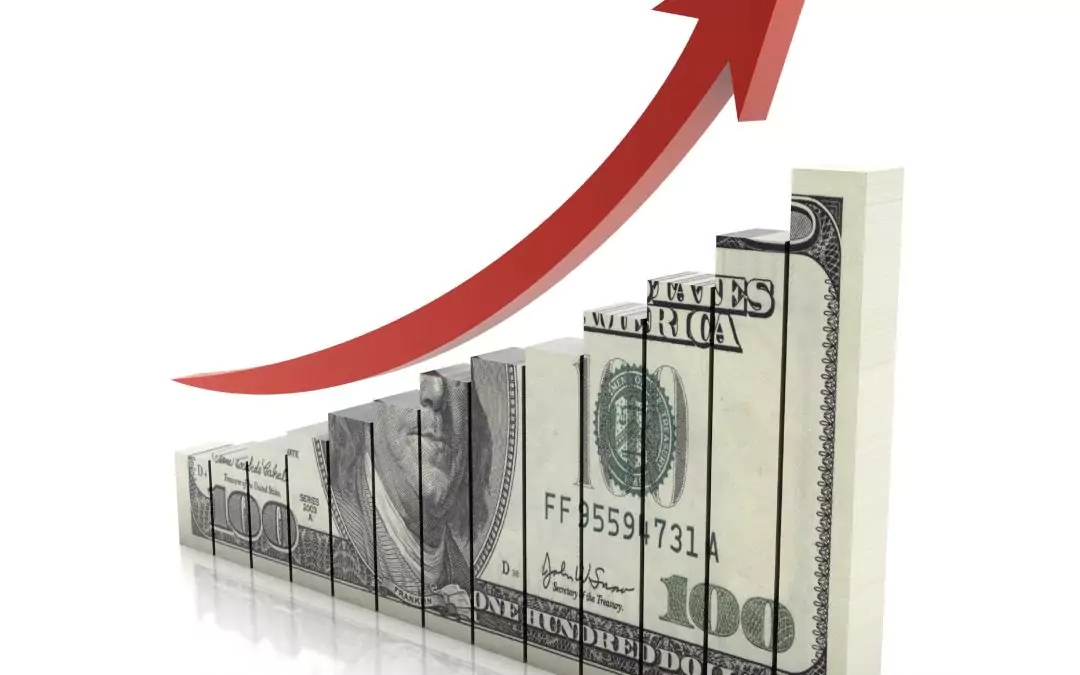
That said, besides the short-term goal of increasing conversions and revenue, the eCommerce marketing funnel also helps you achieve a larger, longer-term goal – creating a loyal customer base for the sustainable development of your businesses.
5 Stages of an eCommerce marketing funnel
There is no universally accepted number of eCommerce marketing funnel stages. It greatly depends on each business’s requirements for steps needed to convert prospects into customers. Some need three, other requires four. In this article, we will provide the five essential stages for a comprehensive view of an effective eCommerce marketing funnel.
Awareness
At the top of your eCommerce marketing funnel is the awareness stage. This is the stage when customers may not have a clear understanding of their needs. They only acknowledge their problem and search for solutions by doing research across their preferred platform. As a result, they may come across an advertisement or a blog post of yours and feel interested in the content it conveys. As they click on the link to your website, they initially form awareness about your brand. Therefore, building content at this step is very important to make a good first impression on your customers.
Here are some tactics to try out:
- Create SEO content: Optimize your website content for relevant keywords to improve your visibility on search engines.
- Utilize social media: Social media sites are great places to quickly reach out to customers. Facebook, Twitter, and Instagram provide two primary marketing tools: paid advertisements and pages or profiles. You can use both avenues to increase brand recognition and business success.
All of these strategies relate to the production of high-quality marketing content to attract customers. To perform better in this phase and achieve goals more quickly, you must ensure that your content targets the appropriate audiences and ranks for the appropriate keywords using SEO.
Consideration
Moving onto this stage, your potential customers have identified their needs and are actively researching solutions. They already know a bit about your business and the products you are offering. You’ll know your customers are considering your products or services when they sign up for your newsletter, download your content upgrade, or connect with you on social media.
However, as they continue their research, they begin comparing your products or services to those of your competitors and reading reviews written by other buyers. As reaching this stage is one step closer to the checkout process, you may need to exert additional effort to establish credibility and retain customers on your sites.
Here are some tactics to try out.
- Continue building useful content: At this stage, they will pay much attention to entertainment and educational values depending on the type of product. Creating detailed product guides, comparison articles, and videos that help customers understand how your offerings can meet their needs are recommended strategies to follow.
- Retargeting ads: Use retargeting ads to show products that potential customers have viewed on your website, remind them of their interests, nurture them, and draw them deeper into the sales funnel.
Desire
In this stage, potential customers have shown a keen interest in your products and are considering making a purchase. They may not decide to purchase yet due to concerns around price, features, complex payment, etc. Alternatively, they may conduct another research and begin further comparing your brand’s products and your competitors’.
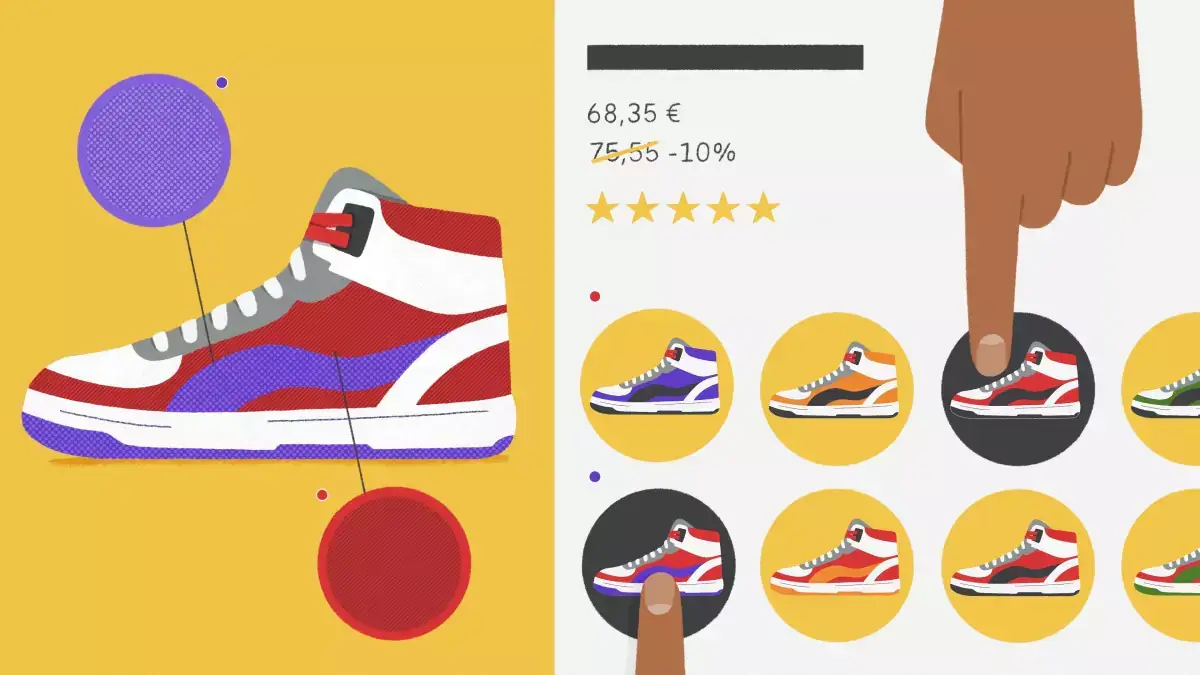
In this way, customers at this stage are very close to buying. Your aim is to build strong emotional connections and convince them that your products or services are the best choice. Here are some recommended strategies for this stage:
- Compelling product descriptions: Craft persuasive and detailed product descriptions that focus on individual product benefits rather than generic features.
- Personalization: Use customer data to tailor recommendations and offers based on their preferences and browsing history.
- Utilize social proof: Add product reviews, display star ratings, and positive social proof on each product page. Trustpilot or Google reviews, on-site testimonials, and social media comments are all forms of social proof. When you have real customers praise your products, you’ll gain increased creditability, encouraging potential leads to buy your products.
- Optimized product pages: Outstanding product pages increase conversions. Use images that are crisp, professional-looking, and optimized for online use so that they load quickly. Start sentences with action verbs and conclude with a compelling CTA. Encourage them to spend more time on your website by recommending that they read your blog, subscribe to your email list, etc.
Action
The action stage is where all of your hard work pays off. This is where potential customers decide to make a purchase. They have your products in the cart or wishlist: all they need to do is complete the transaction.
In order for this step to go smoothly, you need to prepare everything to make it as convenient and easy for the customers as possible. Even a small mistake in the checkout process can increase the cart abandonment rate. Here are some tactics for you at this stage:
- Simplified checkout process: Evaluate your checkout process carefully. Examine whether there is friction or hidden costs that may occur. Ensure that the checkout process is easy to navigate, with minimal steps and a variety of payment options. Eliminate as many form fields as possible, and only ask for essential information.
- Abandoned cart recovery: Implement automated emails and on-site messaging to remind customers about items left in their cart and offer incentives to complete the purchase.
- Trust signals: Display security badges, money-back guarantees, and SSL certificates to reassure customers about the safety of their transactions.
Retention
Even when the transaction is completed, customer retention should not be taken for granted. Repeated purchases from loyal customers are a cost-effective strategy to generate sustainable revenue for businesses, especially B2B. Moreover, satisfied customers are more likely to become brand advocates and refer others. Therefore, not only your businesses can increase overall sales, but also decrease marketing costs while still reaching more potential customers.
The goal of this final part of the eCommerce marketing funnel is to keep existing customers engaged and encourage repeat purchases. Some tactics to consider are:
- Leverage on-site messages and emails: Maintaining relationships with customers is the top priority at this stage. Send regular newsletters and messages with updates, promotions, and valuable content to keep customers engaged.
- Loyalty programs: Implement loyalty programs that reward customers for repeat purchases and referrals. Offer discounts and early access to new products for loyal customers.
- Personalized recommendations: Provide personalized product recommendations based on past purchases and browsing behavior.
- Seamless customer service: Provide dedicated customer service with prompt responses with immediate solutions if customers encounter any product issues that need post-purchase support.
Key KPIs for conversion funnel optimization
Once you’ve developed a strategy, you’ll also need numbers and metrics to determine how well your marketing funnel is performing, as well as how to make adjustments for further improvement and optimization or to address any potential problems. Therefore, setting KPI for eCommerce marketing performance is critically important. Below are some key KPIs you should look for to best optimize your conversion funnel.
Traffic
This is a metric that shows all the people who visit your website over a period of time (like a day, week, or month). Monitoring this KPI helps you understand the volume of potential customers who are exposed to your products or services. This metric can come from anywhere the link might appear, such as search engines, social media pages, paid ads, etc.
By analyzing traffic patterns, you can gauge the effectiveness of your marketing efforts. High traffic levels indicate strong brand visibility and marketing success. Therefore, analyzing traffic sources helps you allocate resources to the most effective channels, thus attracting more relevant visitors. You can also identify which stages of the eCommerce marketing funnel drop suddenly to implement the right eCommerce marketing strategy and fix what’s driving people away.
Bounce rate
Similar to traffic, the bounce rate indicates the percentage of customers who visit your site and then immediately leave. A high bounce rate suggests that visitors are not finding what they are looking for or that the user experience on your website needs improvement. The optimal KPI is to reduce the bounce rate as much as possible.
Using it to enhance and optimize the eCommerce marketing funnel is similar to measuring its traffic. This metric encourages businesses to refine their landing pages, increase the relevance of their content, and improve the overall user experience.
Cart abandonment rate
With this KPI, it measures the number of users who add items to their shopping cart but leave without completing the transaction. Many websites have high cart abandonment rates. This indicates that their website is having obstacles or concerns such as the payment process, or related costs including shipping costs, taxes, etc., that prevent customers from finalizing their purchases.
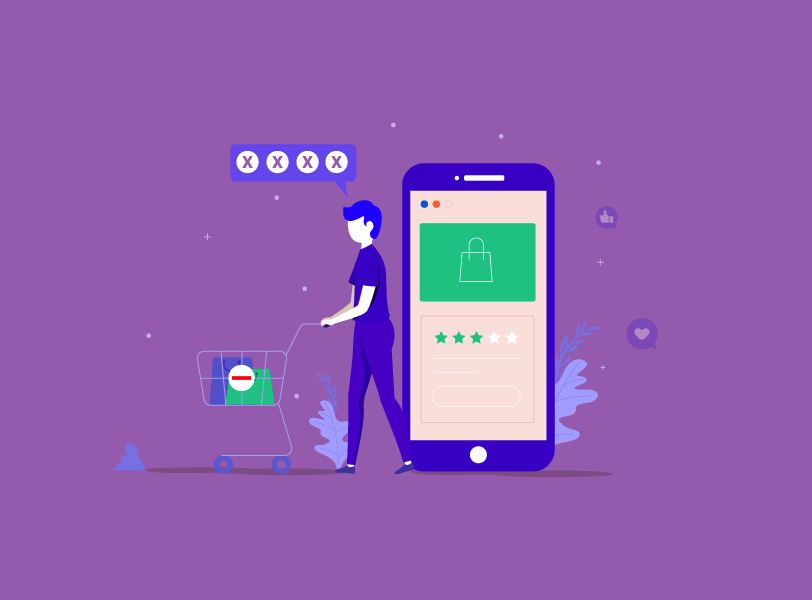
By analyzing this metric, you are allowed to identify reasons for cart abandonment. Whether it is unexpected costs or a complicated checkout process, these are all important data for your businesses to make targeted improvements. Offering clear shipping and return policies, simplifying the checkout process, and sending timely cart abandonment recovery emails can help incentivize customers to continue their purchases and recover lost sales.
Cart recovery rate
The cart recovery rate is the percentage of abandoned carts that are successfully recovered through email reminders or retargeting efforts. This is the clearest demonstration of whether your eCommerce marketing funnel is effective or not. It shows that customers really believe in the products and information you provide, and your efforts to appeal to and encourage customers have been effective. You should combine using the cart recovery rate after using the cart abandon rate for best results.
A high cart recovery rate indicates that your cart abandonment recovery tactics are resonating with customers. If this number has not improved much from before using it, comparing sales with the increase or decrease in traffic will help you realize the problem lies in attracting customers, keeping customers interested, driving their demand, or creating a smooth checkout process. Experiment with different cart recovery strategies, such as offering discounts, providing personalized recommendations, or addressing common objections to find the best way to boost this rate and generate sales.
Sales
Sales represent the number of completed purchases on your eCommerce platform. Monitoring this KPI is crucial for assessing the financial performance of your business.
Tracking sales allows you to directly measure the revenue generated from their marketing efforts. You’ll receive important data to track whether each stage of your funnel is working effectively or not. By understanding the relationship between different stages of the funnel and final sales, you can refine your overall eCommerce marketing strategies to drive more conversions.
Conversion rate
Growth in sales is sometimes everything but the conversion rate is also important, especially for the Desire stage. This is the percentage of visitors who take a desired action, such as making a purchase, signing up for a newsletter, or filling out a contact form. Conversion rate is a direct measure of how effective your website is at turning visitors into customers. The more this number is improved, the more profitable your future sales will be.
Analyzing the conversion rate at each stage can also help identify any bottlenecks and areas that need improvement. In the Desire stage, you’ll get to know the number of customers who already have an interest in buying your products, thus developing more actions to convert them into your buyers.
Redemption rate
As you use promotions and discounts to optimize your eCommerce marketing funnel, you’ll need to know the percentage of customers that convert the coupons you offer them. The redemption rate is a metric for it which measures the percentage of customers who successfully redeem the offered incentives.
Tracking the redemption rate provides insights into the attractiveness of your promotions and discounts. If it’s low, this means it’s not really working with the audience or stages you’re applying on. By analyzing redemption rates, you can refine their promotional strategies and offer more enticing incentives to drive conversions.
3 Easy Steps to Build an Optimized eCommerce Marketing Funnel
Step 1: Identify your customer journey
There are many tools available to assist you in mapping the customer journey; however, Google Analytics is by far the most popular and effective of these tools.

The way it works is by using reports like user flow to see what actions your customers take when they visit and view pages on your website. It then aggregates and calculates which domains bring in the most traffic, the average number of user touchpoints before making a purchase decision, and more.
Step 2: Map your eCommerce marketing funnel stages to conversion triggers
In this step, you will plan to drive conversions for each stage of the eCommerce marketing funnel and execute it. For example, interesting information related to your product will be most useful when used for the Awareness and Interest stages, while social proof information will be beneficial to make customers trust you more at the Desire stage.
Step 3: Determine the point at which a visitor turns into a lead
The most obvious telltale sign of a visitor turning into a lead is when he sends you contact information. Usually, customers will use their email addresses to register for an account or receive information about upcoming products, services, and discounts. Your job after confirming it is to implement a lead nurturing strategy so that they take the final step of making a purchase.
eCommerce marketing funnel examples
If talking about a company that uses an eCommerce marketing funnel successfully, it definitely must not ignore The Honest Company. Let’s analyze some of their strategies at each stage.
- Awareness: This business builds a powerful blog with useful health and lifestyle information to provide readers.
- Interest: The company’s website also has an introduction page about the brand and the presence of social activities for visitors to better understand it when learning more about the company, thereby creating inspiration for them.
- Desire: To strengthen customers’ trust, the company encourages them to use free trials of the products.
- Action: For orders over $50, they will be shipped for free. Then why don’t you buy its products, right?
In addition, to promote membership registration and the power of word-of-mouth marketing, customers of The Honest Co. will receive a voucher worth $20 for successfully referring a new customer to the company. That’s why this company is so successful and has such a strong customer base.
Wrapping up
Once you’ve mapped the buyer’s journey with an eCommerce marketing funnel, you’ll be able to identify what you need to do at each stage on that map and bring more users to the next stage. Hopefully, our guides will help you choose the right eCommerce marketing funnel for your business and make it easier to optimize each stage of it. However, if you are still unclear about this area, don’t hesitate to let us know or visit our blog. Thank you.


